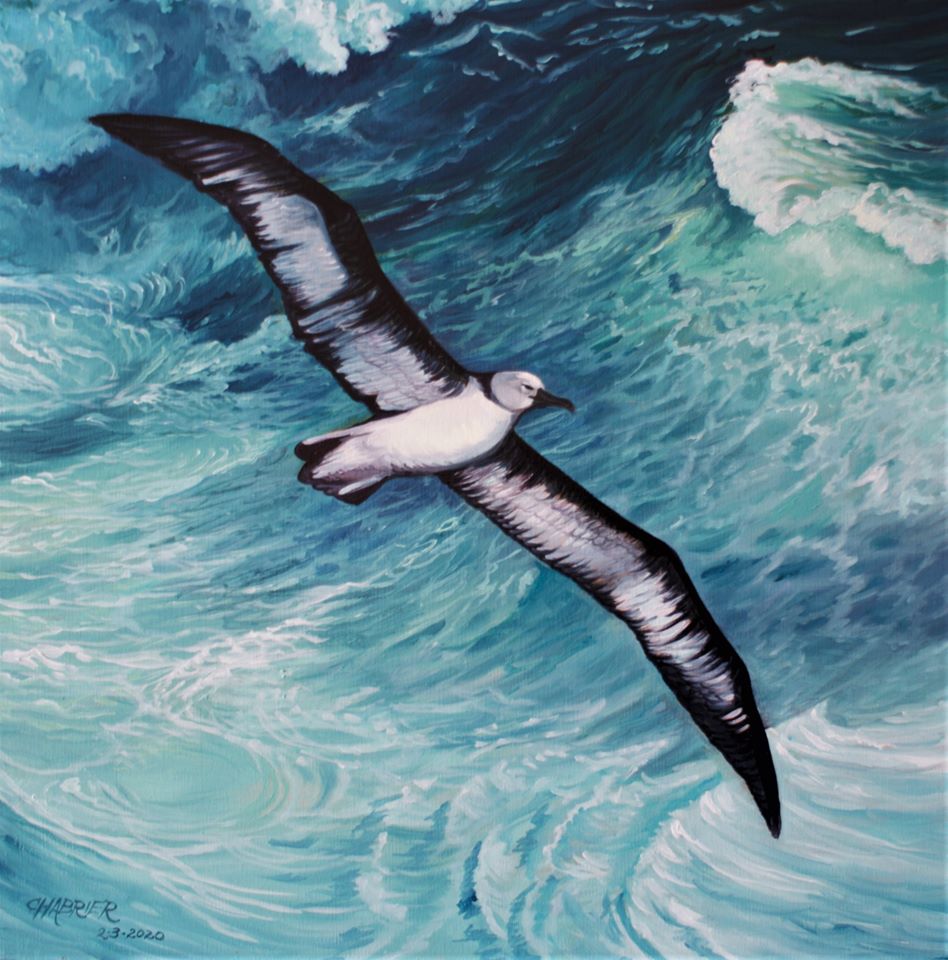
Grey-headed Albatross by Annie Shoemaker-Magdaleno, from a photograph by Dimas Gianuca
Lily Bentley (Department of Zoology, University of Cambridge, UK) and colleagues have published in the journal Marine Biology on diving by three species of albatrosses breeding on Bird Island in the South Atlantic.
The paper’s abstract follows:
“Diving is an ecologically important behaviour that provides air-breathing predators with opportunities to capture prey, but that also increases their exposure to incidental mortality (bycatch) in commercial fisheries. In this study, we characterised the diving behaviour of 26 individuals of three species, the black-browed albatross Thalassarche melanophris, grey-headed albatross T. chrysostoma and light-mantled albatross Phoebetria palpebrata, breeding at Bird Island, South Georgia. Individuals were tracked using Global Location Sensor (GLS)-immersion loggers and time-depth recorders (TDRs) and, for two species, Global Positioning System (GPS) loggers. Although the TDRs recorded 589 dives (defined in this paper as submersion > 1 m), average dive depths and durations were just 1.30–1.49 m and 2.5–3.3 s, respectively, for the three species. In addition, many individuals (22% of black-browed, 20% of grey-headed, and 57% of light-mantled albatrosses; total n = 9, 10 and 7 individuals, respectively) did not dive at all. Most dives occurred at the distal end of foraging trips and were rare during the commuting phase. No dives took place in darkness, despite long periods spent on water at night. The limited and shallow dive activity contrasts with impressions from a previous study using capillary-tube depth gauges (which are less accurate than TDRs) and has implications for the susceptibility of albatrosses to bycatch on longlines. This study provides further support for regulations requiring night setting and increased sink rates of baited hooks to help mitigate albatross bycatch.”
With thanks to Richard Phillips.
Reference:
Bentley, L.K., Kato, A., Ropert-Coudert, Y., Manica, A. & Phillips, R.A. 2021 Diving behaviour of albatrosses: implications for foraging ecology and bycatch susceptibility. Marine Biology 168. doi.org/10.1007/s00227-021-03841-y.
John Cooper, ACAP Information Officer, 27 February 2021

 English
English  Français
Français  Español
Español